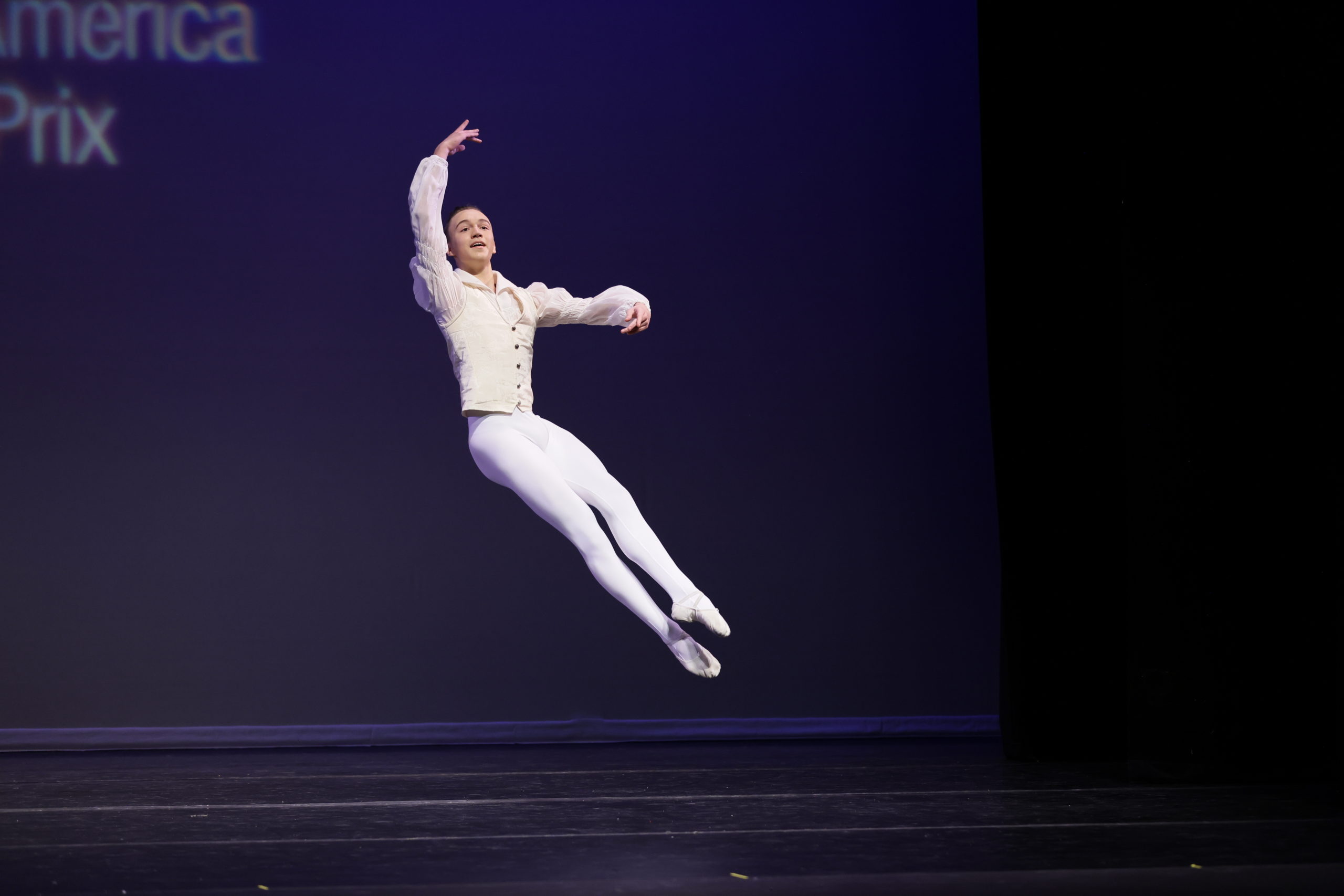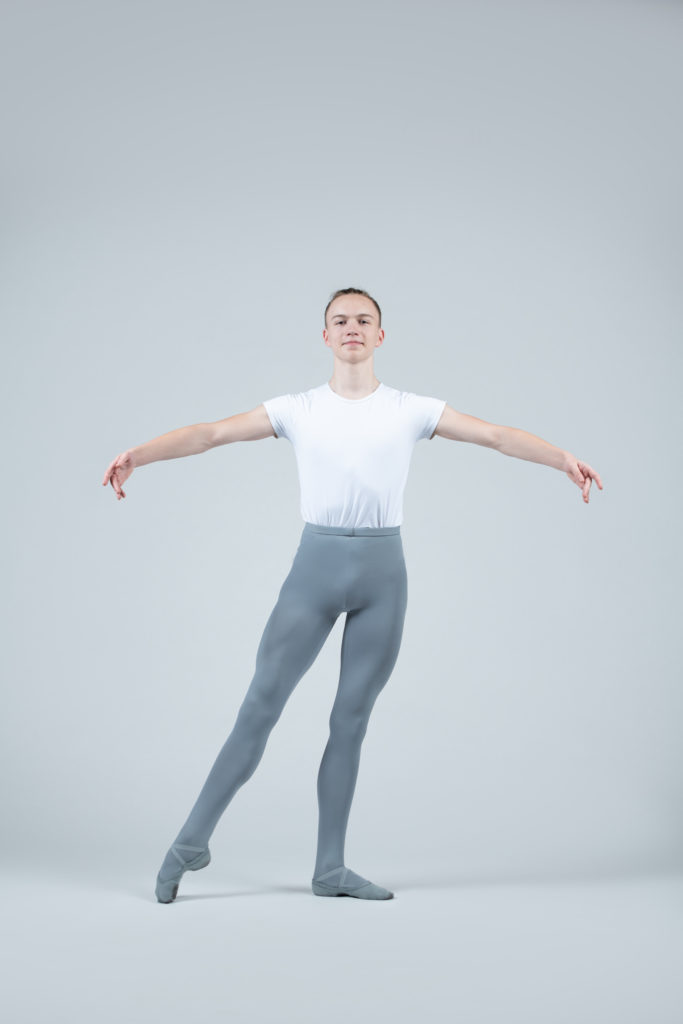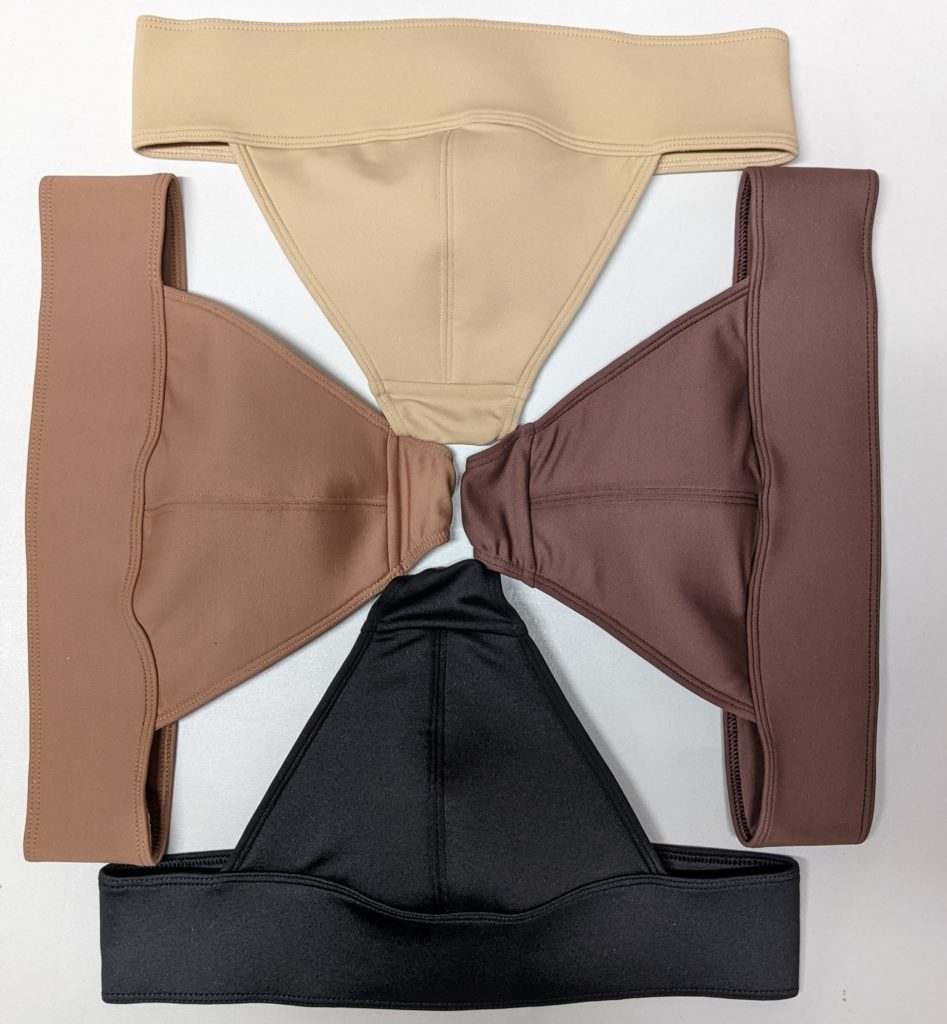
Ryan Andrews started studying ballet when he was 6, in the small town of Sequim, Washington. He was the only boy in class—and still is, 10 years later. Until recently, he didn’t have any male teachers.
It’s well known that boys face social difficulties when studying dance, from feeling awkward to being bullied. But what Ryan and his parents didn’t expect was facing difficulties of a more practical nature inside the ballet studio. “There was no guidance about what he was supposed to wear,” says Leah Andrews, Ryan’s mother. “We’d receive emails about attire for the girls for classes and shows, and there would be nothing about boys.” What was Ryan supposed to wear under his tights? She didn’t know and didn’t have any guidance. No dance stores in the area had a section for boys. The occasional other boy who would be in class would wear boxers. Leah knew that didn’t look right, with the tights sagging low, but no one said anything.

Many teachers, especially women, may not feel comfortable or equipped to have a conversation about dance belts with male students and their parents. But not only is it important to make sure male students have the proper attire for their safety, it’s also vital that they look and feel put-together, professional, modest and not “on display.”
Leah knew it’s hard enough for boys to feel like they belong in ballet. And she saw how much Ryan enjoyed dancing and didn’t want him to quit. “Not having the correct gear—it’s embarrassing to not look right,” she says. “His teacher once put him in a costume with white tights, and I could see his private parts. I was afraid he’d be ridiculed and not want to wear tights anymore.”
Approaching the Dance Belt Conversation
Many studios, especially when female-led, stop their dress code for boys at white shirt, black tights—nothing about dance belts.
Michael Vadacchino is the co-founder and CEO of the online store and dancewear brand boysdancetoo ®. He founded and directed the Male Dancer Conference from 2017–19, which brought together male dancers from around the world for a week of training and camaraderie. He now runs a hybrid online and in-person training organization, The Male Dancer Academy.
Most boys that come to Vadacchino are from an environment without other male figures. He acknowledges that talking about dance belts can be awkward or difficult, but stresses that avoiding the conversation only harms the dancer, and addressing the issue should happen before the first class. “Off the bat, I don’t make it too complicated,” Vadacchino says. “My materials say that dance belts are required for all boys as part of the uniform.”
If any questions arise, and they often do, Vadacchino’s golden rule is to talk to the parents first to avoid parents feeling like the conversation was not appropriate for their child. “It’s a sensitive conversation, and you want to make sure the parents are comfortable,” he says. “Even if the relationship with the student is strong, it’s just better to go to the parent.”
Sometimes, he will tell parents that he would like to talk to the boys as a group, but makes sure all parents have signed off before doing so. “It helps the parents know they’re in a safe space,” he says.
For younger boys, around 8 to 10, if there’s pushback or discomfort, he advises to give the option of a full-seat dance belt over the thong. For older students, he strongly encourages the thong dance belt, explaining that, even for dancers not wearing tights, it prevents injury and makes movement easier.

Making Students Comfortable
Kiyon Ross, director of company operations at Pacific Northwest Ballet School, who teaches classes for young boys there, doesn’t usually consult with parents (unless they have questions or concerns about purchasing/using dance belts) before speaking to the class, and hasn’t had complaints. “I bring one in and explain what it is. Some have never seen one before,” Ross says. “It takes the weirdness and mystery out of it.”
He recommends brands and sizes to them and offers feedback. “If I see in class that it’s not right, it’s not fitting, I tell them,” he says.
Beyond getting the right fit and preferred style, a male dancer needs to know how to organize their anatomy in the dance belt. “We talk about how the private parts fit in. I tell them that it’s not like underwear,” Ross says. “You have to fix it so it goes in the upward direction.”

Tom Kilps, a former dancer with Texas Ballet Theater and founder of the dance belt line Dance Jox, is even more direct than Ross. His website has an instructional page that reads: “As you reach into the pouch, pull everything upwards and make sure the testicles are at the front with everything else pointing upwards. Your penis is supposed to end up facing towards 12 o’clock.”
However, Kilps says that in conversations with parents and students he isn’t as direct. He frequently receives calls from parents looking to buy their son his first dance belt and have questions and anxiety about the process. He finds it’s better to say things like “anatomy” rather than “penis” or “testicles.” “People know what you mean, and I think it’s just less awkward for everyone,” he says.
Dance Jox sells dance belts in two shades of brown, as well as beige and black. Kilps was one of the first to do this. Until recently, dancers of color couldn’t buy dance belts that matched their skin tone.

Vadacchino adds that this is very important for young boys of color. “It’s important if wearing white tights to have a match, but above that, this is an identification with skin tone, and to not have anything that even comes close to yours feels unwelcoming,” he says. “We don’t want those kids to not feel seen.”
In the end, the conversation about dance belts comes down to being welcoming. It can be tough for boys to choose to study dance. They need to know that in the studio, they belong—and look like they do. One way Vadacchino does this is by looking to current dancers for inspiration. “I tell students ‘Your favorite dancers that you follow on social media, they’re wearing a thong dance belt. You need to as well,’” he says.
This approach resonated for Ryan, who wants to be more like Joseph Gatti, who he says is “just insane.” “Once Michael [Vadacchino] counseled us on what Ryan should wear—a dance belt and tights properly pulled up—it made such a difference. His lines looked so long, and other parents commented to us that he just looked like a professional dancer,” says his mother, Leah. “It’s all because we took the steps to make sure he looks right.”




